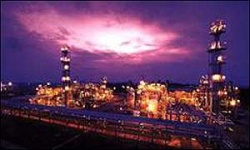Refining deals up sharply in 2011 amid shedding of global assets
Refiners realigned their corporate strategies in 2011, with many shedding refining assets and others choosing to exit the sector altogether, according to a report released Wednesday from IHS Herold.
Driven in part by continued overcapacity in the global refining sector, this resulted in a very active year for refining transactions, which increased to nearly $6 billion in 2011 from $4 billion in 2010, according to the IHS Herold 2011 Global Downstream M&A Review.
The report tracks significant worldwide energy mergers and acquisitions (M&A) as well as transaction values involving refining and other downstream assets, including petrochemical facilities, terminals/storage, propane distribution and diversified downstream assets (refining/terminals/service stations).
 According to the report, total global downstream sector transaction values fell slightly to $35 billion in 2011 from $38 billion in 2010.
According to the report, total global downstream sector transaction values fell slightly to $35 billion in 2011 from $38 billion in 2010.
The decrease was driven by a 45% decline in the natural gas distribution subsector, which was offset by significant increases in the propane distribution, retailing/marketing, refining and petrochemical subsectors.
Deal count in the downstream sector rose from 61 transactions in 2010 to 68 transactions in 2011, with refining accounting for 10 deals.
Petrochemical transactions actually declined from eight in 2010 to seven in 2011, but the value of those deals rose from a total of nearly $10 billion in 2010 to slightly more than $13 billion in 2011.
The level of transaction value in retailing/marketing subsector in 2011 was about three times the level recorded in 2010, primarily due to Shell’s $1 billion sale of most of its downstream businesses in Africa to Vitol and Helios Investment Partners.
The propane distribution subsector was nine times the level of transaction values in 2010, due primarily to Energy Transfer Equity Partners’ exit from the US propane distribution market with its $2.9 billion asset sale to AmeriGas Partners.
“US-based companies, including Murphy Oil, and independent refiner Sunoco, announced their planned exits from the refining sector in 2011, while ConocoPhillips and Marathon Oil elected to de-integrate their respective downstream operations,” said Cynthia Pross, senior analyst for M&A research at IHS and author of the report.
“Faced with the prospect of continued low margins, decreasing fuel demand in the US, overcapacity, aging, inflexible facilities, and increasing environmental regulation, integrated oil companies have had to reevaluate their downstream business strategies,” she added.
“For some, the refining business no longer makes economic sense, so they are focusing on their more lucrative upstream operations, which have much better margins due to higher oil prices. For others, it is an opportunity to acquire assets at favorable prices.”
A single transaction, which resulted from an agreement by US refiners Holly and Frontier to merge, totaled $2.7 billion of the total  $6 billion refining subsector transaction value.
$6 billion refining subsector transaction value.
Valero also acquired two refineries in 2011 - Chevron’s Pembroke refinery and other downstream assets in the UK for $730 million, and Murphy’s Meraux refinery on the US Gulf Coast for $325 million.
Refinery location has become a major factor for operators as it relates to crude sourcing logistics, expansion possibilities, environmental pressures and competition, noted Pross.
The US East Coast refining industry has been under particular pressure as it faced higher crude oil input costs compared with Mid-Continent counterparts.
Refineries located in more densely populated areas tend to face greater environmental scrutiny, and many of these refineries are older, less complex and less flexible to handle a wide variety of crudes from multiple sources.
East Coast refiners rely more on Brent-priced crude than other US refiners and they also face stiff competition from exports from overseas refiners.
The recent wide spread between Brent crude prices and West Texas Intermediate (WTI) prices pushed some of these refiners over the edge.
“Continued low operating margins and the costs associated with retrofitting older facilities to meet newer environmental standards, make many of these assets uneconomic for some refiners, who’ve chosen to shut the facilities down. In the absence of changes to this market, these refineries may remain shut-in,” said Pross.
 “However, part of the problem in the US is the need for additional pipeline infrastructure to move new crude sources to refining end markets,” she added.
“However, part of the problem in the US is the need for additional pipeline infrastructure to move new crude sources to refining end markets,” she added.
“The ability to transport crude from US shale plays, such as the Bakken crude to the East Coast, for example, would have a significant impact on operating cost dynamics by lessening the cost disparity.”
If these dynamics shift enough, refineries that have been shut-in on the US East Coast could possibly become more appealing to potential buyers in the future, the report says.
Some buyers have found favorable prices for refining assets. While other companies were shutting down East Coast refineries, PBF, a relatively new refining company, recently restarted the Delaware City, Del. refinery, which it acquired at a favorable price from Valero, IHS said.
Meanwhile, refiners in other parts of the country have been expanding, such as the Wood River refinery in Illinois, the report notes. The Shell/Saudi Aramco Motiva refinery in Texas is also expanding. A few years ago, Marathon completed a major expansion and upgrade of its Garyville, La. refinery.
Refineries in parts of the US other than the East Coast tend to be larger, more complex and more flexible, and are more linked to petrochemical operations, so they can more easily adjust to market changes and these refineries are also able to source cheaper North American crude.
Several European refineries sold in 2011, after remaining on the market for several months, including ConocoPhillips’ Wilhelmshaven refinery in Germany, which was sold to Dutch firm Hestya, and Chevron’s Pembroke refinery in the UK, which was sold to Valero, giving Valero its first site in Europe.
This was also an opportunity for Asian firms to gain a foothold in Europe at favorable prices, and Shell’s Stanlow refinery in the UK was sold to Indian firm Essar Energy, while PetroChina acquired interests in the Grangemouth refinery in Scotland and the Lavera refinery in France.
Several European refineries have been shut-in and converted to terminals as these refineries have become less economic, struggling with a margin squeeze from overcapacity, falling demand and higher feedstock costs. The latter was particularly due to fewer sourcing options with the loss of Libyan crude, which was a severe blow to margins for Atlantic basin refineries.
Asian countries, such as China and India, face growing demand for fuels, which could drive Asian companies to look at additional assets elsewhere, including the US and Europe, as potential acquisition targets that could competitively serve those regions.
“We expect refiners to continue to face challenges through 2012 and beyond,” said Pross. “Political tensions in Iran may prove to be a significant factor in the near term, as a result of higher oil prices from reduced supply, which could further erode margins for refiners who are reliant upon crude sourced from Iran, and this could force more refining assets, particularly older units, to go on the market.
“Refiners that have chemical operations will have an advantage because a broader slate of product offerings can cushion against market-demand swings for fuel products, particularly in the US, where they can source the growing supply NGLs from shale plays.“
For more on the report, visit the IHS website by clicking here.






Comments